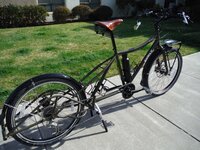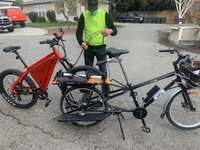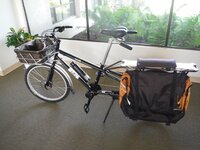I am curious if you can still get the full torque out of a motor if the watts are restricted? For instance, keeping a bike to 750 watts would open up more legal riding options. However, I still want good torque to help get up steep hills. Looking at bikes with bafang ultra or bbshd, and torque ratings in the 160-120 nm range, but also with wattage in the 1,000-1,500 range. Several vendors offer models with wattage restricted to 750, I am assuming because of the legal issues. I don't care about top speed, but don't want to sacrifice hill climbing power.
Questions like these come a lot, especially in this forum.
Relationship between torque and power is simple. Torque x Angular speed = Power.
Comparing torque numbers without additional information is a big mistake and usually will lead to very erroneous conclusions. Like the one that were made in the posted video.
What makes you move is power. This is a fact. As long as you can transfer that power to the wheels you will move.
For a mid drive what this means is,
as long as you have the right gearing to keep the motor at the cadence where it produces its maximum power, the higher the power the faster you will climb.
Likewise this also means that, as long as you have the right gear ratio, you can slow down and climb with similar effort(power-wise) with lower powered motors.
For example, to climb %5 grade, with a total of 250lbs(bike+rider) you need,
~500W to move at 15mph
~145W to move at 5mph.
As long as you have the gear both a 500W and a 150W motor will climb that hill, 150W motor will climb slower.
The problem begins when you can not keep the motor at the rpm that it produces its maximum rated output. That is when you need the power/rpm graph (gives the same information as torque/rpm graph). Most of these motors have a torque/rpm curve which is non-increasing with rpm hence the higher torque numbers are achieved at lower rpms. For mid drives what this means is , If the rider can not keep the cadence high enough, say you are below 60rpm, the higher torque motor is likely to give the higher power output and will move easier...




